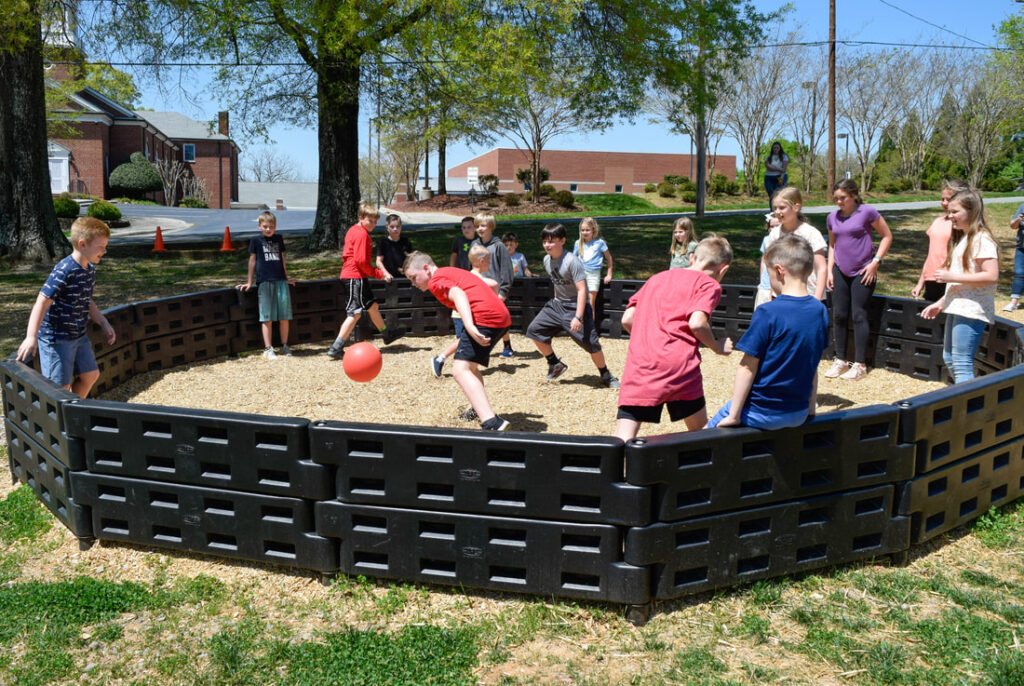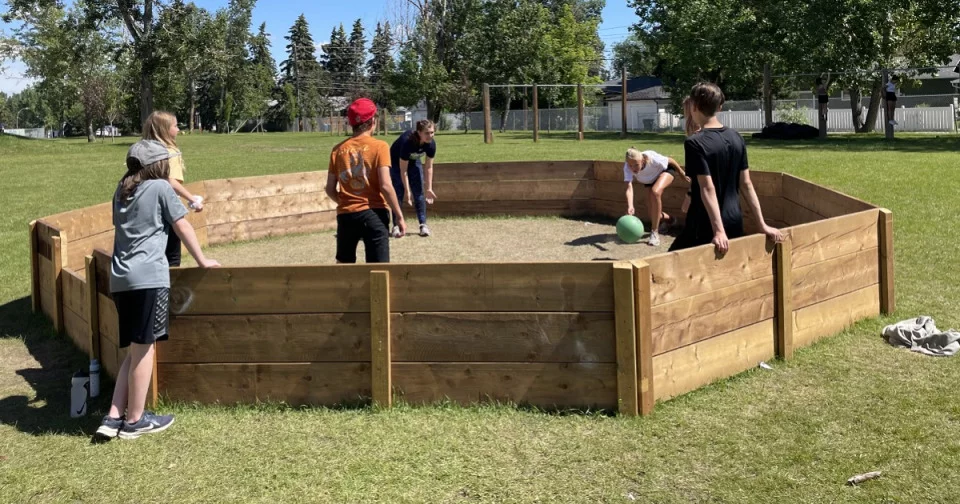Gaga Ball, often described as a gentler, faster-paced variant of dodgeball, has swiftly become a favorite pastime among children and adults alike. Its origins are somewhat obscure, but its impact on playgrounds, summer camps, and even adult recreational leagues is undeniable. This article delves into the history, rules, benefits, and cultural significance of Gaga Ball, exploring why this game has captivated so many people around the world.
Origins and Evolution
The exact origins of Gaga Ball are somewhat debated, but it is widely believed to have originated in Israel in the 1970s. The Hebrew word “ga” means “hit” or “touch,” and the game was initially played in Jewish summer camps before spreading to the United States and beyond.
The game gained traction in North America through summer camps, where it was quickly adopted due to its inclusive nature and ease of play. By the 1990s, Gaga Ball pits were a common sight at camps across the United States. The game’s simplicity and minimal equipment requirements contributed to its rapid spread, eventually making its way into schools, community centers, and even backyards.
The Gaga Ball Pit and Equipment
A typical Gaga Ball pit is an octagonal or hexagonal enclosure, usually made of wood or plastic, with walls approximately three feet high. The size of the pit can vary, but it is generally around 15-25 feet in diameter. This enclosed space helps keep the ball in play and adds an element of strategy as players navigate the confined area.
The only other equipment required for Gaga Ball is a soft, bouncy ball. The ball is usually similar in size to a kickball or a playground ball. The softness of the ball is crucial, as it ensures that the game remains safe and reduces the risk of injury when players are struck.
Rules of the Game
Gaga Ball is known for its straightforward and easy-to-understand rules, which make it accessible to players of all ages and skill levels. Here is a comprehensive look at the basic rules:
- Starting the Game: All players stand inside the pit, touching the walls. A referee or a designated player throws the ball into the center of the pit. The game begins with players shouting “Ga!” on the first bounce and “Ga!” again on the second bounce, after which the ball is live and the game starts.
- Objective: The goal is to hit the ball with an open hand to strike other players below the knees (or below the waist, depending on the agreed-upon rules). Players must avoid being hit while trying to eliminate others.
- Elimination: A player is out if the ball strikes them below the knees (or waist). Players are also eliminated if they hit the ball out of the pit, use closed fists, or make contact with the ball more than once consecutively (double-tap rule).
- Re-entry: In some variations, players who are eliminated can re-enter the game under specific conditions, such as when the player who eliminated them is also knocked out.
- Winning: The last player remaining in the pit is declared the winner.
These simple rules can be modified to suit the preferences of the players, making Gaga Ball a highly adaptable game.
Benefits of Playing Gaga Ball

Gaga Ball is not only fun but also offers a range of physical, social, and cognitive benefits. Here are some of the key advantages:
- Physical Fitness: Gaga Ball provides a full-body workout, enhancing cardiovascular health, agility, and coordination. The game’s fast pace requires quick reflexes and constant movement, which helps improve endurance and overall fitness.
- Inclusivity: One of Gaga Ball’s greatest strengths is its inclusivity. The game can be played by individuals of varying skill levels and physical abilities. The emphasis on fun and participation over competition ensures that everyone can enjoy the game.
- Social Skills: Playing Gaga Ball fosters social interaction and teamwork. Players must communicate, strategize, and sometimes form alliances, which helps build social bonds and develop communication skills.
- Cognitive Development: The game requires players to think quickly and make split-second decisions. This enhances cognitive skills such as problem-solving, strategic thinking, and spatial awareness.
- Emotional Well-being: The inclusive and engaging nature of Gaga Ball helps boost self-esteem and confidence. The game also provides an outlet for stress relief and promotes a sense of joy and camaraderie among players.
Cultural Impact and Popularity
Gaga Ball’s rise in popularity can be attributed to its accessibility and the sense of community it fosters. The game is now a staple at summer camps, schools, and recreational centers across the globe. Its presence on social media platforms has also contributed to its widespread appeal, with countless videos and tutorials showcasing the excitement and fun of Gaga Ball.
In schools, Gaga Ball is often incorporated into physical education programs. Educators appreciate the game for its ability to engage students of all fitness levels and encourage physical activity in a fun, non-threatening environment. Many schools have built permanent Gaga Ball pits on their grounds, and some even host Gaga Ball tournaments.
Summer camps continue to be a stronghold for Gaga Ball, where the game is played daily and often becomes a highlight of the camp experience. The communal aspect of camp life and the game’s ability to bring together campers of different ages and backgrounds make it a perfect fit for these settings.
Additionally, adult leagues and community centers have embraced Gaga Ball, recognizing its potential to bring people together for fitness and fun. In urban areas, Gaga Ball events and tournaments are becoming increasingly common, drawing participants looking for a nostalgic or novel way to stay active.
Variations and Adaptations
As with many popular games, variations of Gaga Ball have emerged, adding new twists and challenges. Some of the most common variations include:
- Team Gaga: Players are divided into teams, and the game is played with the same basic rules. This variation emphasizes teamwork and strategy, as players must work together to eliminate the opposing team.
- Blind Gaga: Players are blindfolded, and the game is played with the help of spotters outside the pit who guide them. This version requires heightened communication and trust between players and spotters.
- Multi-Ball Gaga: Multiple balls are introduced into the pit, increasing the intensity and chaos of the game. Players must stay even more alert and agile to avoid multiple balls at once.
- No Walls Gaga: Played in an open space without the confinement of a pit, this variation requires players to stay within a designated area. It tests players’ spatial awareness and ability to navigate an open field.
- Timed Rounds: Instead of playing until only one player remains, games are played in timed rounds. The player with the fewest eliminations or the last one standing at the end of each round earns points, and the player with the most points at the end of multiple rounds wins.
These variations keep the game fresh and exciting, ensuring that players never tire of Gaga Ball’s dynamic gameplay.
Building a Gaga Ball Pit
For those interested in constructing their own Gaga Ball pit, the process is relatively straightforward and can be a rewarding DIY project. Here are some basic steps to guide you:
- Materials: You will need wood or plastic panels for the walls, metal brackets or hinges for support, screws, and tools such as a saw, drill, and measuring tape. Pre-made Gaga Ball pit kits are also available for purchase.
- Design: Determine the size and shape of your pit. Octagonal or hexagonal designs are common. A typical pit has walls that are 3 feet high and spans 15-25 feet in diameter.
- Construction: Cut the panels to the desired length and assemble them using metal brackets or hinges. Ensure that the structure is sturdy and secure, with no sharp edges or protruding screws.
- Location: Choose a flat, open area for your pit. Grass, sand, or rubberized surfaces are ideal for cushioning falls and reducing the risk of injury.
- Maintenance: Regularly inspect the pit for damage or wear and make necessary repairs to ensure safety and longevity.
Conclusion
Gaga Ball has transcended its humble beginnings to become a global phenomenon. Its appeal lies in its simplicity, inclusivity, and the joy it brings to players of all ages. Whether in the confines of a summer camp, the playground of a school, or the backyard of a home, Gaga Ball continues to capture the hearts and minds of those who play it.
As the game evolves and new variations emerge, its core values of fun, community, and physical activity remain unchanged. Gaga Ball is more than just a game; it is a testament to the enduring power of play and the connections it fosters. In a world where digital distractions often dominate, Gaga Ball offers a refreshing return to the basics of human interaction and the sheer enjoyment of movement and competition.




